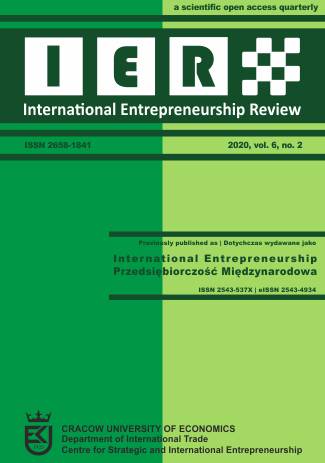Income statement as an assessment tool of an airport operator: A case study of Polish airports

Abstract
Objective: This article aims to show the characteristics of airport finances and its implications for operational management. It presents comparative case study analysis and tools to evaluate income statement data as a basis for assessment of the financial condition of an airport operator.
Research Design & Methods: The paper is divided into three parts. The first one focuses on the characteristics of airports’ typical revenue structure and is operational consequences to the managerial board. It is discussed how to resolve infrastructure bottleneck problems with financial techniques. The second part is devoted to the operational cost analysis with an attempt to check whether popular hypotheses concerning airports’ finance specifics apply to Polish regional airports. The analysis examines the elasticity of fixed costs regarding the number of passengers served. The last part of this paper contains a break-even point analysis of Polish regional airport as a benchmarking tool of comparative analysis.
Findings: An analysis of costs at Polish airports was carried out confirming the thesis about a very high share of fixed costs in the total operating costs of aviation activities and its small elasticity regarding number of passengers served. Profitability thresholds at Polish airports were examined, confirming the thesis that profitability is usually achieved after exceeding the 1 mln number of passengers served annually. This number corresponds to annual revenues of about PLN 50 million.
Contribution & Value Added: Investigation of the measures and determinants of airports finance characteristics gives insight into the relationship between infrastructure throughput and break-even point.
Keywords
airports, finance, break-even point, operational management, infrastructure bottleneck
Author Biography
Wojciech Augustyniak
Assistant professor at the Department of Microeconomics of Poznań University of Economics and Business. PhD in Economics (2012), Master in Management and Marketing (2009). His research interests include benchmarking of airports as well as data envelopment analysis.
References
- Aczel, A. (2011). Statysyka w zarządzaniu. Wydawnictwo Naukowe PWN.
- Adler, N., Ülkü, T., Yazhemsky, E. (2013). Small regional airport sustainability: Lessons from benchmarking. Journal of Air Transport Management, 33, 22-31.
- Augustyniak, W. ( 2017). Analiza progów rentowności polskich regionalnych portów lotniczych. Przegląd Komunikacyjny 12.
- Announcement No. 2 of the President of the Civil Aviation Office of December 14 2012 regarding airport charges at Chopin Airport in Warsaw, Pos. 116 (2012). http://edziennik.ulc.gov.pl/#/legalact/2012/116/ (14.04.2020)
- Competition Commission (2009). BAA airports market investigation A report on the supply of airport services by BAA in the UK. London: Competition Commission.
- Baca, B. (2011a). Przychody pozalotnicze portów lotniczych – kluczowe czynniki sukcesu (cz. 1). PRTL. http://www.prtl.pl/porty_lotnicze_artykuly,2913,1 (30.03.2020).
- Baca, B. (2011b). Przychody pozalotnicze portów lotniczych – kluczowe czynniki sukcesu (cz. 2). PRTL. http://www.prtl.pl/porty_lotnicze_artykuly,2995,5 (30.03.2020).
- Bubalo, B. (2012). Benchmarking selected European Airports by their Profitability Envelope
- – a Break-Even Analysis. German Aviation Research Society, German Aviation Benchmaring Final Project Meeting.
- Doganis, R. (1992). The Airport Business. Routledge.
- Graham, A. (2009a). Managing Airports: An International Perspective. Butterworth-Heinemann.
- Graham, A. (2009b). How important are commercial revenues to today’s airports? Journal of Air Transport Management, 15, 106-111.
- Gray, F. (2010). Maximization of the commercial potential from a new airport terminal develop-ment: Tel Aviv Case Study. C.P.I. Ltd. Airport Economics & Finance Symposium”. University of Westminster.
- Heathrow (2014). Heathrow Airport Limited, Conditions of Use including Airport Charges. Heathrow.https://www.heathrow.com/file_source/Company/Static/PDF/Partnersandsuppliers/heathrow-conditions-of-use-2014_july-update.pdf (14.04.2020).
- Kampf, R., Majerčák, P., & Švagr, P. (2016). Application of Break-Even Point Analysis. NAŠE MORE, 63 (3 Special Issue), 126-128. https://doi.org/10.17818/NM/2016/SI9
- Machaczka, J. (1998). Zarządzanie rozwojem organizacji: czynniki, modele, strategia, diagnoza, Warszawa: PWN.
- Przedsiębiorstwo Państwowe Porty Lotnicze (2009). Raport Roczny 2009. PPL.
- Przedsiębiorstwo Państwowe Porty Lotnicze (2010). Raport Roczny 2010. PPL
- Przedsiębiorstwo Państwowe Porty Lotnicze (2012). Raport Roczny 2012. PPL.
- Rozporządzenie Ministra Infrastruktury i Rozwoju, Dz.U. 2014 poz. 1990 (2014). http://isap.sejm.gov.pl/isap.nsf/DocDetails.xsp?id=WDU20140001990 (24.07.2020)
- Ruciński A. (1998). Rynek usług pasażerskiego transportu lotniczego. Gdańsk: Wydawnictwo Uni-wersytetu Gdańskiego.
- Stefańska, A. (2012). Pozalotnicze przychody lotnisk. Rzeczpospolita. http://www.rp.pl/artykul/851270-Pozalotnicze-przychody-lotnisk.html (18.04.2020)
- Tłoczyński, D. ( 2011). Dywersyfikacja pozalotniczych źródeł przychodów polskich portów lotniczych. Logistyka, 3 2815-2822.
- Ustawa prawo lotnicze, Dz.U. 2002 nr 130 poz. 1112 (2002). http://isap.sejm.gov.pl/isap.nsf/DocDetails.xsp?id=WDU20021301112 (24.07.2020)
